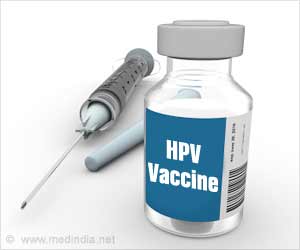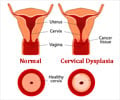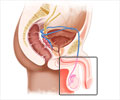Highlights
- The urine test is highly accurate than other tests based on genetic markers.
- Cervical lesions with abnormal cells that not only develops into cancers but also spreads, can be identified.
- The test can avoid more than 50% of unnecessary biopsies taken after an abnormal pap smear and HPV positive.
Additionally, they demonstrated that the DNA for all three human genes and one viral gene could be successfully extracted from urine, and they could identify such lesions with 75 percent sensitivity.
"If further studies confirm these findings, we see a significant use of urine screening as a way to quickly and inexpensively determine if a biopsy is warranted, or if physicians can use a 'watch and wait' approach before intervening," says Guerrero-Preston.
Typically, he says, a woman who tests positive for HPV and has an abnormal Pap smear undergoes a biopsy to rule out cervical cancer using cells taken directly from cervical tissue. But previous studies suggest more than 50 percent of these biopsies are unnecessary and can result in pain, worry, infertility and higher health care costs.
"Our urine test would serve as a molecular triage," he says, "at times supplementing Pap test information. In developing countries that don't have the money, medical infrastructure or cultural approval for Pap test, our test could be used instead."
The researchers tested the value of these genes as markers using 214 cervical cell samples. The women ranged in age from 18 to 86. Among the test samples, 34 showed no abnormalities in their cervix; 87 showed one of three types of precancerous, abnormal tissue; and 90 showed clear evidence of cervical cancer.
Using methylation as a value to diagnose malignancy, the three genes together showed a 90 percent sensitivity, meaning that their presence was able to predict a true positive cancer sample this percentage of the time. The test had an 88.9 percent specificity, meaning the percent of time the test correctly identified someone without the disease.
"When developing a new cancer screening test, we want something in the range of 90 to 95 percent sensitivity, which is competitive with the effectiveness of tests developed and now marketed in Europe," says Guerrero-Preston.
The next step, the researchers report, was to verify that the four-gene test worked using freely circulating DNA from blood and urine, rather than DNA taken directly from cervical tissue.
For this experiment, they tested 40 samples of paired cervical tissue, blood and urine from a subset of the patients from Puerto Rico. Using the DNA from blood, they found the test had an 85.7 percent sensitivity and a 60.9 percent specificity. Using urine, they found a 75 percent sensitivity and an 83.3 percent specificity.
During the course of the study, the time to process cervical samples, blood or urine and get a test result took four days. They plan to continue modifying the test to improve the urine sensitivity to that of the cervical tissue samples.
According to World Cancer Research Fund International, 84 percent of cervical cancers occur in less developed countries, with the highest rates in Africa, Latin American and the Caribbean. In the United States, cervical cancer used to be the highest cause of cancer deaths among women, but that soon changed when the yearly Pap smear was introduced over 40 years ago. Countries without the infrastructure or cultural acceptance for regular Pap tests have not seen declining cancer rates.
Guerrero-Preston and his colleagues have a research agreement with Cepheid to develop a way to reduce the waiting time for a test result from a maximum of four days in the lab to under three hours in a Cepheid instrument using sealed cartridges to minimize sample handling and contamination.
Source-Eurekalert














